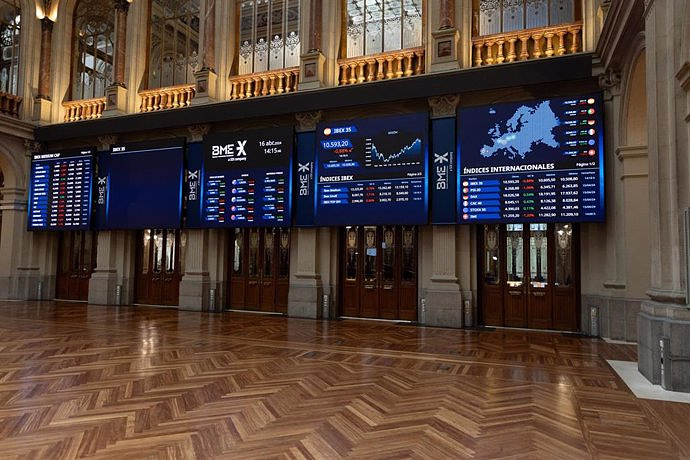Peter Brandt, a favorite veteran dealer and CEO of proprietary trading company Factor LLC, recently gave his thoughts on Goldman Sachs possibly restarting its cryptocurrency desk.
On Dec. 21, 2017, a similar Bloomberg slice stated the Goldman Sachs would establish a cryptocurrency trading desk, even although the bank was"still trying to solve security difficulties."
Although Brandt's chart seems significant, one ought to understand that such speculation had been continuing for a couple of months. The Wall Street Journal already covered Goldman Sachs' intention to do so on Oct. 2, 2017.
Even if we dismiss the exact date, then Goldman Sachs apparently ditched these plans to establish its Bitcoin (BTC) trading desk.
The incoming retail demand was so impressive that it caused the trades Binance, Bitfinex and Bittrex to deny new users temporarily.
Binance accounts were even sold by consumers straight to other users in the time when no fresh sign-ups were being accepted. In other words, there is currently no retail frenzy in Bitcoin similar to what happened in late 2017. In reality, the present bull cycle appears to be driven by institutions which are apparently scooping up BTC on each dip.
Meanwhile, the $66 billion daily average traded volume found on Feb. 22, since Bitcoin's market capitalization peaked at $1.09 trillion, had been relatively flat for the past six weeks.
Therefore, an experienced technical analyst such as Brandt should have included the caveat that volume is the most important market participation indicator -- that he frequently emphasizes in his additional investigations.
To settle this difference permanently, one needs to understand the basics of futures markets. Derivatives exchanges charge perpetual futures longs (buyers) or shorts (sellers) a commission every eight hours to maintain a balanced risk vulnerability. This indicator, known as the financing speed, will turn optimistic when longs are the ones requiring more leverage.
As the above chart indicates, buyers were willing to pay as much as 40% per week to leverage their long positions. This is completely unsustainable and a indication of extreme optimism. Any market recession would have caused cascading liquidations, together with all the BTC price accelerating into the disadvantage.
Such exorbitant rates no more exist, albeit the present 4% per week funding rate has been the highest since June 2019.
Lastly, an individual should factor in that December 2017 marked the launching of CME and CBOE futures contracts. As Cointelegraph astutely put back then: "This unprecedented event might have a significant effect on this Bitcoin economy" In retrospect, this appears to have been the peak euphoria indicate the bears were awaiting.
However, while Brandt has become well known at the cryptocurrency area for anticipating the 80 percent -and correction following the 2017 Bitcoin price high, his track record has been less impressive in recent times.
Therefore, to sum up, there's zero evidence to support Brandt's theory besides a single event that happened once in the 11 years of Bitcoin trading. And of course that the 2017 Goldman Sachs cryptocurrency trading desk rumors had been going for a short time.

 Exploring Cardano: Inner Workings and Advantages of this Cryptocurrency
Exploring Cardano: Inner Workings and Advantages of this Cryptocurrency Seville.- Economy.- Innova.- STSA inaugurates its new painting and sealing hangar in San Pablo, for 18 million
Seville.- Economy.- Innova.- STSA inaugurates its new painting and sealing hangar in San Pablo, for 18 million Innova.- More than 300 volunteers join the Andalucía Compromiso Digital network in one month to facilitate access to ICT
Innova.- More than 300 volunteers join the Andalucía Compromiso Digital network in one month to facilitate access to ICT Innova.-AMP.- Ayesa acquires 51% of Sadiel, which will create new technological engineering products and expand markets
Innova.-AMP.- Ayesa acquires 51% of Sadiel, which will create new technological engineering products and expand markets Abascal (Vox) criticizes that Sánchez is "victimizing" himself and calls for elections after his possible resignation
Abascal (Vox) criticizes that Sánchez is "victimizing" himself and calls for elections after his possible resignation Carlos Alcaraz reaches the round of 16 in Madrid without breaking a sweat
Carlos Alcaraz reaches the round of 16 in Madrid without breaking a sweat Some 5,000 people demonstrate in front of Congress for democracy, hours before Sánchez's decision
Some 5,000 people demonstrate in front of Congress for democracy, hours before Sánchez's decision STATEMENT: Intelligent systems used in the construction of the deepest underwater tunnel in China
STATEMENT: Intelligent systems used in the construction of the deepest underwater tunnel in China How Blockchain in being used to shape the future
How Blockchain in being used to shape the future Not just BTC and ETH: Here Are Some More Interesting Coins Worth Focusing on
Not just BTC and ETH: Here Are Some More Interesting Coins Worth Focusing on UPV students build a prototype of a wooden house to move to Equatorial Guinea
UPV students build a prototype of a wooden house to move to Equatorial Guinea The UA opens the call for the Impulso 2024 Awards for the best innovative business initiatives
The UA opens the call for the Impulso 2024 Awards for the best innovative business initiatives ALI, virtual assistant from Alicante, internationally recognized by the OECD
ALI, virtual assistant from Alicante, internationally recognized by the OECD Retrópolis brings the golden age of video games and computing to the UPV
Retrópolis brings the golden age of video games and computing to the UPV A million people demonstrate in France against Macron's pension reform
A million people demonstrate in France against Macron's pension reform Russia launches several missiles against "critical infrastructure" in the city of Zaporizhia
Russia launches several missiles against "critical infrastructure" in the city of Zaporizhia A "procession" remembers the dead of the Calabria shipwreck as bodies continue to wash up on the shore
A "procession" remembers the dead of the Calabria shipwreck as bodies continue to wash up on the shore Prison sentences handed down for three prominent Hong Kong pro-democracy activists
Prison sentences handed down for three prominent Hong Kong pro-democracy activists ETH continues to leave trading platforms, Ethereum balance on exchanges lowest in 3 years
ETH continues to leave trading platforms, Ethereum balance on exchanges lowest in 3 years Investors invest $450 million in Consensys, Ethereum incubator now valued at $7 billion
Investors invest $450 million in Consensys, Ethereum incubator now valued at $7 billion Alchemy Integrates Ethereum L2 Product Starknet to Enhance Web3 Scalability at a Price 100x Lower Than L1 Fees
Alchemy Integrates Ethereum L2 Product Starknet to Enhance Web3 Scalability at a Price 100x Lower Than L1 Fees Mining Report: Bitcoin's Electricity Consumption Declines by 25% in Q1 2022
Mining Report: Bitcoin's Electricity Consumption Declines by 25% in Q1 2022 Oil-to-Bitcoin Mining Firm Crusoe Energy Systems Raised $505 Million
Oil-to-Bitcoin Mining Firm Crusoe Energy Systems Raised $505 Million Microbt reveals the latest Bitcoin mining rigs -- Machines produce up to 126 TH/s with custom 5nm chip design
Microbt reveals the latest Bitcoin mining rigs -- Machines produce up to 126 TH/s with custom 5nm chip design Bitcoin's Mining Difficulty Hits a Lifetime High, With More Than 90% of BTC Supply Issued
Bitcoin's Mining Difficulty Hits a Lifetime High, With More Than 90% of BTC Supply Issued The Biggest Movers are Near, EOS, and RUNE during Friday's Selloff
The Biggest Movers are Near, EOS, and RUNE during Friday's Selloff Global Markets Spooked by a Hawkish Fed and Covid, Stocks and Crypto Gain After Musk Buys Twitter
Global Markets Spooked by a Hawkish Fed and Covid, Stocks and Crypto Gain After Musk Buys Twitter Bitso to offset carbon emissions from the Trading Platform's ERC20, ETH, and BTC Transactions
Bitso to offset carbon emissions from the Trading Platform's ERC20, ETH, and BTC Transactions Draftkings Announces 2022 College Hoops NFT Selection for March Madness
Draftkings Announces 2022 College Hoops NFT Selection for March Madness























